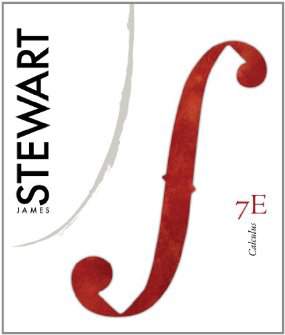Connecting...

This is a quick preview of the lesson. For full access, please Log In or Sign up.
For more information, please see full course syllabus of Multivariable Calculus
For more information, please see full course syllabus of Multivariable Calculus
Multivariable Calculus Parameterizing Surfaces & Cross Product
Lecture Description
This lesson is going to be very, very important. We are going to be talking about parameterizing surfaces and then we are going to begin to discuss the cross product. Now we are moving away from 2-dimensions, and we are moving into 3-dimensions. We are going to revisit Green's theorem and the fundamental theorem of calculus in its 3-dimensional form, Stoke's theorem, divergence theorem, things like that. So, what we are going to do today is lay out the foundations, how to describe a surface, how to think about a surface, this thing called a cross product, what it means and so on.
Bookmark & Share
Embed
Share this knowledge with your friends!
Copy & Paste this embed code into your website’s HTML
Please ensure that your website editor is in text mode when you paste the code.(In Wordpress, the mode button is on the top right corner.)
×
Since this lesson is not free, only the preview will appear on your website.
- - Allow users to view the embedded video in full-size.
Next Lecture
Previous Lecture










































 Answer Engine
Answer Engine



1 answer
Fri Feb 26, 2016 5:05 AM
Post by David Löfqvist on February 13, 2016
Hi! This might be a little bit off topic, but i'm wondering if since a X a = 0 does that mean that a X ä = 0 in general? a is a vector
0 answers
Post by Heinz Krug on October 25, 2013
Hi Raffi,
that makes sense now. In the lecture you did not mention the magnitude and you said "... there is a similar formula for the cross product" and you wrote:
a x b = ||a|| ||b|| sin θ
(a and b are vectors with arrows on top)
I was a bit worried then and looked it up in Wikipedia, which clarified the point by multiplying this with a normal vector n.
2 answers
Last reply by: Heinz Krug
Thu Oct 24, 2013 4:42 AM
Post by Heinz Krug on October 23, 2013
Hi Raffi,
why is the cross product also defined as norm of vector a times norm of vector b times sin of angle? Wouldn't that be a scalar? Isn't the norm always a scalar, so this product would be the product of three scalars, therefore a scalar? What is missing here?
0 answers
Post by Aaron Harper on November 23, 2012
Dr. Hovasapian,
I've triple checked, you are most certainly correct. The cross product is [-4, -28, -8]. I thought it was very strange that there was an error. Being I've watched you're entire series in this section and have not encountered an error yet.
You do a great job at teaching this subject and I appreciate your feedback. I apologize that I was the one that made the error. I rechecked it many times, but I was the one with the wrong setup.
So far, you and Educator have helped me pass Calculus 3 with a good understanding, and a decent grade thus far.
Thank you,
Aaron
0 answers
Post by Professor Hovasapian on October 29, 2012
Hi Aaron,
I hope all is well with you.
Aaron, I've double-checked the arithmetic -- both by hand and with Mathematical Software (Maple) -- and A X B is definitely (-4, -28,-8).
The values you calculated came from missing the negative sign on the 5 in vector "a" -- it is definitely -5.
This brings up a very important issue that I address several times in many lessons throughout the entire course, and I hope you'll forgive me if I philosophize a little.... Arithmetic is not important. It matters for a specific problem, but it is not Mathematics.
What I hope for regarding my students is that they transcend calculational mathematics and begin to see the important things that take place underneath.
I talk all the time about the thousands of Arithmetic errors I make all the time -- you'll find many of them in these lessons -- because arithmetic is tedious and troubling and meaningless in the big picture of real mathematics -- this is why we have Math Software to do the dirty work for us.
But math software can never think for us -- can never set up an Integral for us -- can never choose the vectors making up a cross product for us. Only WE can do these things.
There will always be someone there to check your arithmetic -- there will not always be someone there to check your mathematical structures. It's the structures that matter, because structures DO NOT CHANGE. Numbers do....
Now, I understand that for the purposes of a test for a class, YES, calculation matters. It is my hope that someday more and more professors will stop burdening their students with silly calculations and start helping them to become big picture thinkers.
Sorry for the philosophy lecture.
Take good care, Aaron, and Best wishes, always.
Raffi
1 answer
Last reply by: Aaron Harper
Fri Nov 23, 2012 11:01 AM
Post by Aaron Harper on October 28, 2012
The cross product is [16, -8, -8], it is not [-4, -28, -8]
Now I'm skeptical about the entire video.